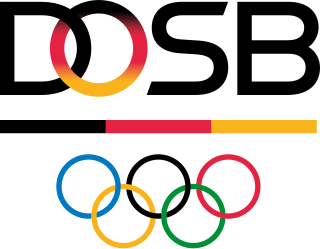
The German Olympic Sports Confederation was founded on 20 May 2006 by a merger of the Deutscher Sportbund (DSB), and the Nationales Olympisches Komitee für Deutschland (NOK) which dates back to 1895, the year it was founded and recognized as NOC by the IOC.

The Factory Workers' Union of Germany was a trade union in Germany.
The General Commission of German Trade Unions was an umbrella body for German trade unions during the German Empire, from the end of the Anti-Socialist Laws in 1890 up to 1919. In 1919, a successor organisation was named the Allgemeiner Deutscher Gewerkschaftsbund, and then in 1949, the current Deutscher Gewerkschaftsbund was formed.

The Miners' International Federation (MIF), sometimes known as the International Federation of Miners, was a global union federation of trade unions.
The Union of Mining and Energy was a trade union in West Germany which existed from 1946 until 1997.
Friedrich Ernst Husemann was a German trade union leader and politician.
Deutschsozialistische Bergarbeiterverband was a Nazi trade union for German miners in Czechoslovakia. It was founded in 1922. The union was based in Most. As of 1929, it claimed to have 3,371 members. The union was linked to the German National Socialist Workers Party (DNSAP). Heinrich Proste was the leader of the union. Deutschsozialistische Bergarbeiterverband was affiliated with the Reichsvereinigung der Deutschen Gewerkschaften. The union published the monthly Der deutscher Bergmann from Most between 1924 and 1933.
The Union of Painters, Decorators, Whitewashers, Plasterers, and House Painters of Germany was a trade union representing painters in Germany.
The Union of Coppersmiths of Germany was a trade union representing coppersmiths in Germany.

The Central Union of Machinists and Stokers and Kindred Trades of Germany was a trade union representing machine operators and those in related areas of work, in Germany.
The Union of Bookbinders and Paper Workers of Germany was a trade union representing workers involved in manufacturing paper and binding books in Germany.
The Union of Lithographers, Lithographic Printers and Kindred Trades was a trade union representing printers in Germany. It was sometimes referred to as the Senefelder Union, after Alois Senefelder, the inventor of lithography.
The German Leather Workers' Union was a trade union representing workers involved in tanning and glovemaking.
The Central Union of Bakers and Confectioners was a trade union that played a significant role in representing workers in bakeries and related trades in Germany.
The Union of Graphic Assistants of Germany was a trade union representing assistants in the printing trade in Germany.
The German Railway Union was a trade union representing railway workers in Germany.
The Union of Domestic Workers of Germany was a trade union representing domestic staff in Germany.
The Union of Porcelain and Related Workers of Germany was a trade union representing workers in the ceramic industry in Germany.
The Union of Saddlers and Portfolio Makers was a trade union representing workers involved in making saddles, bags and wallets.
The Union of Bakers and Related Workers of Germany was a trade union representing workers in the baking industry in Germany.




